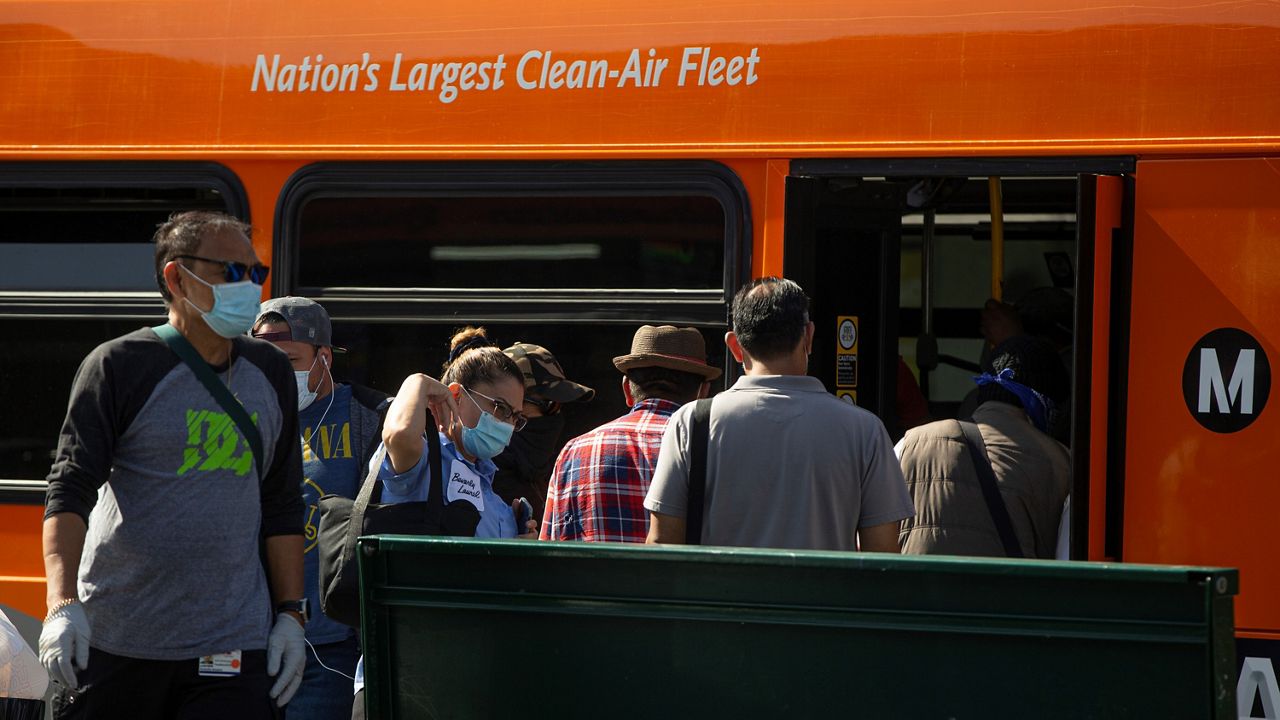LOS ANGELES (CNS) — The Los Angeles City Council Wednesday approved a $30 million spending plan to replace and add bus shelters in underserved areas and improve sidewalks near them.
What You Need To Know
- The city will install the shelters starting early next year
- The 280 shelters are part of an overall vision to install 3,000 new shelters in the next five years under the city's Sidewalk and Transit Amenities Program
- About 230 shelters will replace existing ones, while 50 will be installed at locations currently without shade or shelter
- In 2022, the council approved a 10-year contract with Tranzito-Vector to install and maintain bus shelters, and sell advertising space on them
The council voted 10-0 to approve the request by the Board of Public Works, with council members Kevin de León, Eunisses Hernandez, Imelda Padilla, Curren Price and Monica Rodriguez absent during the vote.
The Board of Public Works requested authority to use a $30 million loan from the Public Works Trust Fund to install new shelters, prepare a loan repayment schedule and identify additional sources of funds to minimize the interest on the loan.
A letter from the City Administrative Office notes the trust fund was established to hold deposits from permit applications and is separate from the city treasury.
Lance Oishi, a contract administrator for the Bureau of Street Services, previously said the $30 million would be used to install 280 new shelters citywide. About 230 shelters will replace existing ones, while 50 will be installed at locations currently without shade or shelter, he added.
The city will install the shelters starting early next year. The city plans to repay the loan to the trust fund in five equal payments of $6 million through 2028, using revenue generated through bus shelter advertising.
The 280 shelters are part of an overall vision to install 3,000 new shelters in the next five years under the city's Sidewalk and Transit Amenities Program.
In 2022, the council approved a 10-year contract with Tranzito-Vector to install and maintain bus shelters, and sell advertising space on them. Under the terms of the agreement, the city will collect 60.5% of the revenue from advertising.
The Bureau of Street Services estimated the city would receive $500 million in revenue generated from ads.
The council on Wednesday also established the Reinvestment in Accessibility, Infrastructure and Streetscape Enhancements for Los Angeles, or RAISE LA, Fund. It will serve to hold revenue generated by advertising from the bus shelters.
Money in that account will be used to purchase and install more bus shelters, and fund infrastructure improvements, such as maintenance, street improvements and landscaping needs.
A separate bank account was also established to hold approximately $4 million of revenue generated by advertising from bus shelters, which will be split between each of the 15 council district offices for discretionary use.
Prior to Wednesday's vote, Councilwoman Nithya Raman, who sits on the Public Works Committee, said, "We have made as a region significant investments in our public transit infrastructure," yet the use of public transit "continues to be a fairly uncomfortable thing."
"I'm hopeful that having a dedicated source of revenue for this will actually enable us to reach our very ambitious goals of having bus shelters across all of our bus stops in the city, and get us closer toward making the use of public transit as comfortable and safe as possible for all of our residents," Raman said.
Councilman Bob Blumenfield, the vice chair of the Public Works Committee, expressed his support for both the $30 million plan and RAISE LA Fund. Blumenfield said the plan was something he worked on for a long time when he was the chair of the Public Works Committee.
He noted that over the last decade, the city installed about 25 new bus shelters across the city, which he called "pathetic and embarrassing," and a consequence of the previous contract and bureaucracy.
"My district, it gets be 120 degrees in the summer. People are standing out there without any bus shelter, and our riders are our most vulnerable Angelenos," Blumenfield said.
"It's really important that we have this new program that's going to generate revenue and that revenue is going to be dedicated to creating more shelters."



